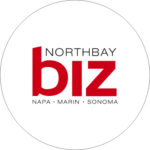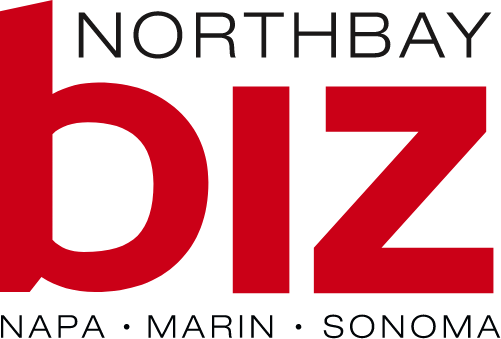Santa Rosa’s Sonic.net, once a local startup, is now a booming regional business.
Chalk it up to synchronicity, timing, hard work or just plain good luck, but Sonic.net, once a local startup, is now a regional success story. Cofounders Dane Jasper (now CEO) and Scott Doty first met at Santa Rosa Junior College (SRJC) in the early 1990s while working together in the computing services department.
“I was a student employee doing networking, and Scott was a staff member with similar responsibilities,” says Jasper. “I was deploying Internet access around the campus to labs and offices, and Scott was doing a project to provide dial-up Internet access.” According to Jasper, SRJC was the first community college in the state to obtain Internet access; at that time, only three other organizations in the area had it: Sonoma State University, Hewlett Packard (now known as Agilent) and O’Reilly & Associates, Inc.
The Internet service was popular on campus. However, Jasper and Doty, both computer science majors, didn’t realize just how popular until they did an audit of student accounts. According to Jasper, the audit showed that a number of nonstudents also held accounts for Internet service at SRJC. “We found that high school students were buying [SRJC] IDs on the black market for $25 to get this product. That’s what drove me to start a company and do this privately,” says Jasper. That was the seed of inspiration that began the company they originally named Sonoma Interconnect. Jasper and Doty’s goal was to offer inexpensive, high-speed Internet access. Initially, the service was offered for $12 per month with a $50 setup fee for dial-up service.
The early days
Jasper and Doty started Sonoma Interconnect in 1994 with no client base and $9,000 in cash and equipment, working from a room in Jasper’s mother’s house. “It was a sunroom at the back of the house with all these windows," says Jasper. “I set up a couple of desks, two computers, eight phone lines and a 56k Internet connection.” It may sound slow by today’s standard, but it was the same speed used at the junior college. At that time, Jasper continued to attend SRJC full time and was working part time, funneling all of his money back into the business.
Within a year, the business outgrew its capacity to work from a residence. The phone company advised Jasper and Doty to get commercial space, because it wouldn’t sell more than 17 phone lines to a residence. Jasper and Doty found an office in downtown Santa Rosa, on Fourth and B streets, which let them expand their customer base.
Initially, the dial-up Internet service was offered only in Sonoma County, but over time, the service expanded throughout California, which prompted a name change for the company. By the late 1990s, Sonoma Interconnect changed its name to Sonic.net, which, according to Jasper, was created from the root of the original company name.
As the company continued to grow, it moved to its current location in southwest Santa Rosa at 2260 Apollo Way. Sonic.net was able to avoid the resource problems that were the bane of many startups during the Internet boom by carefully managing its growth as a company. How? “No leasing!” says Jasper. “Basically, we only grew as fast as we could afford to grow. At one point, we closed the door to new clients while we waited on new capacity.”
Growth and change
The company has experienced a couple of major growth scenarios over the years, according to Mark Loher, director of sales and marketing. First, it partnered with AT&T to sell that company’s DSL product. “We were an authorized solutions provider,” says Loher, “which meant we could sell AT&T’s product and services, but we took it one step further.
“We wanted to differentiate ourselves, so we decided to build our own ATM [Asynchronous Transfer Mode],which allowed us to take the DSL circuits and aggregate them on to our ATM network.”
ATM is a switching technique for telecommunications networks. It uses asynchronous time-division multiplexing and encodes data into small, fixed-sized cells. At the end of the day, Loher explains, “we issue an email address to customers and they ‘live’ on Sonic’s network. That means more awareness [for Sonic], more branding and if someone has an issue, they call Sonic and use our technical support [not AT&T’s].”
“Our affiliation with AT&T let us grow in the high-tech industry by being an Internet service provider,” says Loher. “And that’s what we wanted: to build our own Internet service that can resolve issues using our own employees.”
The second key factor that contributed to Sonic.net’s growth is the world-class data center in its Apollo Way building. The data center houses the servers, and its ability to operate smoothly is key to the success of the business. Keeping the temperature at a consistent 68 degrees and humidity to a minimum is essential, says Loher. Air filters are changed out routinely, and antidirt mats are kept at the entrance to ensure the room is as particle-free as possible.
“When clients bring in their hardware to set up their applications or Web pages, you have to eliminate all chances for that hardware to break down,” says Loher. “You want [the data center] to run 24/7, 365 days a year. We have air conditioners, dual fiber connections, generators, backup battery power and more. The room has as much survivability as we were able to engineer built into it. The data center has a very high up-time.”
Access to the data center requires a key card and a biometric body scan. Surveillance cameras are positioned in each row. Clients have access to the data center 24 hours a day, seven days a week, every day of the year, so they can install their hardware, which carries their websites and applications. There are 160 racks in the data center. Some local clients include O’Reilly Media, Amy’s Kitchen and Barbara’s Bakery. “Crash carts” are also available with computers so clients can make changes to their database, check to make sure the hardware they’ve installed is working properly or upgrade existing hardware without exiting the center.
New products
Over the years, Sonic.net has become a fully licensed Competitive Local Exchange Carrier (CLEC). “As a CLEC, you get to create your own products, price points and service-level agreements,” says Loher. “When fully licensed, you have the ability to enter into a business partnership with an Incumbent Local Exchange Carrier (ILEC) such as AT&T and Qwest. This let us bring a couple new products to market,” says Loher.
One of the new products, Fusion, was introduced to the marketplace last year and is Sonic.net’s leading product today. Fusion offers unlimited broadband and unlimited local and long-distance home telephone service. The residential package is offered at $39.95, while the business package for Fusion is offered at $49.95 plus $0.01 per minute for long-distance calls.
Sonic.net adopted a European pricing model for Fusion by forgoing the common U.S. practice of limiting a customer’s Internet speed based on pricing tiers. At Sonic.net, Fusion customers get the maximum Internet speed possible plus a traditional phone line. According to Loher, single-line Fusion allows clients to download files quickly at up to 20 Mbps (megabits per second); dual-line can be up to 40 Mbps.
Why is speed so critical? It depends on what you intend to do on the Internet, says Loher. “If you have a lot of content that’s graphic-intensive⎯like pictures or loading up a Web page⎯you want a better connection. What you do on the Internet dictates what you should get in terms of speed.” If you’re a business such as a department store and want to make it easy for clients to order wedding gifts online, then you want to access that information quickly, says Loher. “Fusion is the reason for the company’s substantial growth,” says Loher, “and it’s been explosive growth.”
The second new offering is actually a family of products called FlexLink, which delivers high-speed access in a range of speeds to meet the needs of businesses today. FlexLink Ethernet is the ideal product for businesses that need guaranteed, ultra-fast Internet service that comes with a Service Level Agreement (SLA). “If Internet service is mission critical to your business, then FlexLink is the ideal product,” says Loher. “The SLA guarantees that, if there’s an issue, we’ll respond and start working on the problem within four hours.” Sonic.net has more than 500 FlexLink business clients throughout the greater San Francisco Bay Area, and it’s adding 25 to 35 more clients every month.
“Both Fusion and FlexLink are facilitated off of a state-of-the-art platform and let Sonic provide high-quality Internet access that’s both reliable and priced extremely aggressively in the marketplace,” says Loher.
On the horizon
Late last year, Sonic.net was selected to operate and support a trial fiber-to-the-home network Google is building at Stanford University. This experimental project will test new fiber construction and operation methods while delivering full gigabit speeds to about 850 faculty and staff-owned homes on campus.
The build-out uses fiber as opposed to copper, and Loher explains, “When you use fiber, speed is virtually unlimited. Using fiber lets you watch TV, stream movies, download files, talk on the phone and have an Internet connection at the same time—and have plenty of bandwidth to do more…and it will happen really, really fast.”
Currently, Google is trenching the streets at Stanford to install the fiber network. “Sonic will do installation in the homes and provide all the technical support,” says Loher. “If there’s a problem, they call us to facilitate and we’ll work through the problem to find a resolution.”
Why is this project so important to Sonic.net?
“America is behind in high-speed Internet access when compared to European countries,” says Loher. “This project lets us test out a model to facilitate gigabyte speed and lets folks enjoy all the features the Internet can provide today.”
“The Internet is all about speed,” Loher continues. “The partnership with Google unleashes the Internet, and that’s why we’re excited about the project. I think a huge door will open.”
Earlier this summer, Sonic.net completed the first phase of a fiber optic network in Sebastopol that will offer the fastest residential Internet anywhere in the United States. The service is currently available to about 50 homes on Florence Avenue and will be expanding to more homes by the end of the year. “Residents will be able to download a movie in moments or download songs in seconds rather than minutes,” says Loher.
Over the next five years, Loher says the company will continue to introduce cutting-edge products. “We’re always looking at new opportunities to grow the company,” he says.
Keys to success
Since the company’s modest beginnings, Sonic.net has grown tremendously in the past 17 years. Today, it’s Northern California’s leading independent Internet service provider. The company’s open network provides services to 70 other Internet service providers that deliver broadband services across a 13-state territory. The customer base numbers 60,000 and, in the last six months, it’s increased staffing by 25 percent.
So what are the keys to Sonic.net’s success? “The technology is the technology is the technology,” says Loher. “We’re all about customer service: The heart and soul of Sonic is our employees. We have incredibly dedicated people who provide exceptional service. Our customer service representatives will go way beyond to get our customers running and happy with their computer, Internet connection and speed. We go the extra mile and then some.”
The company also maintains its back-to-basics approach to doing business, in many ways similar to its earliest days. For example, Sonic.net has 122 employees and operates lean and mean. “Many of us wear multiple hats,” Loher says. “We’re conservative, but there’s strategically planned growth. And everyone here is absolutely onboard with the fact that we want to spoil our customers.”
To this day, when customers call Sonic.net’s number, they get a technical support representative right away (or very quickly) rather than having to work through layers and layers of an automated voice system. “Whenever I have an issue with my Internet [service], I call Sonic and a live person⎯as opposed to an automated voice⎯picks up my call and answers my questions,” says Joni Jacobs, a customer with Sonic.net for the last eight years. “They’re professional and polite, and they offer excellent service.”
The company is also a bit of an anomaly in today’s business world. “Sonic has no debt,” says Loher. “Everything we do is in cash. We have no investors, no board of directors. We can react quickly to technological changes and bring those to our network users. It’s a great way to run a business. We’re a very significant anomaly. We’re doing something right.”
The success of Sonic.net
Today, Sonic.net is a full-service Internet provider still dedicated to providing fast, reliable and inexpensive service and technical support, and to keeping California and the world connected. It’s one of the first Internet service providers (ISPs) to bring DSL access to Wine Country. And much like its early beginnings, the company is committed to offering customers more bang for the buck than any other ISP.
Sonic.net’s best advertising has always been word-of-mouth referrals from existing customers. Loher says that has everything to do with how Sonic employees take care of their customers: “As we continue to expand territories and introduce new products, we haven’t lost sight of the fact that what’s enabled us to get where we are today is hiring exceptional people that truly care for our customers,” says Loher. And according to Jasper, word-of-mouth advertising has also moved to Twitter.
Did Jasper ever think Sonoma Interconnect would become the business it is today? “Certainly not. I wouldn’t have named it Sonoma Interconnect if I did,” he says, laughing. “It was very much a boot-strap startup, and it’s always been profitable and always growing. It’s a very prototypical startup story for us. I didn’t know in 1994 that the Internet was going to expand the way it did. It was every success story at its root: some good luck, good timing and hard work. We’re lucky to be in an industry that’s an important part of our global society.”
Author
-

Karen Hart is the editor of NorthBay biz magazine, keeping her finger on the pulse of the North Bay, directing content and leading day-to-day operations of the editorial team. An award-winning writer, Karen brings more than 30 years of experience to the position. She is a member of the California Writers Club, and serves on the Journalism Advisory Council at Santa Rosa Junior College. She moved to Sonoma County in 2000, and she’s here to stay.
View all posts



